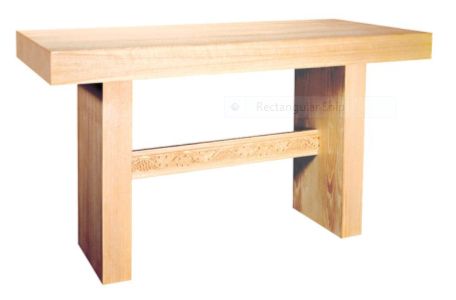Question
When bending wood, is it the steam/moisture or the heat that allows wood to bend? Or is the moisture just a vehicle aiding the transfer of heat to the wood?
Forum Responses
(Furniture Making Forum)
From contributor M:
You got it on that last part.



If I had 2 similar pieces of wood, one soaked in water for a day and the other dry... placed them in the oven separately for an hour each at 250 degrees, which piece would be most flexible? I bend large 2 x 6 material and need to know where to concentrate my energy to get the most flexible piece.
You can indeed bend totally dry, but cooking wood at too high a temperature has a couple of things working against it. Drying it too far, too fast is a good way to cause checks. It can also cause brashness. This is not something you can see, but if the part needs to have the strength one might expect from the same dimensions of a given wood, it could lead to problems. Brash wood snaps abruptly without much tenacity.
As far as wetting thin plies, then gluing them together, I have not tried that. I have to wonder what that does to whatever glue you have chosen. Have you done destructive tests, and do you know the glue has penetrated the wetted wood?
If you are bending wet plies, then letting them dry before gluing, I would rather just use more thinner dry plies, and get it over with.
The lignin softens at around the same temperature that water boils, which makes the steam a good carrier of the heat, and makes it easy to turn plenty of readily available materials into a possible steam chamber.
Whereas trying to use the same things with dry heat could lead to melting plastic pipe, or setting wooden ones on fire.
The Veritas Steam-Bending Instruction Booklet available from Lee Valley is a good little book for bending that is easy to read and understand. There are plenty of pitfalls which are hard to intuit when bending wood.
When the tension forces get too high and the wood might break, we add compression forces (push on the ends) to offset the tension forces.
Steam carries the heat, but soaking in hot water would get the wood too wet, so that hydraulic forces would develop when bending. At the same time, steam also increases the MC somewhat. Ideal MCs for severe bends are in the 20% MC range, while for gentle bends, as low as 15% MC can be used. Steam is often used as it is available and it transfers heat extremely fast.
There is more technical and practical info in the book The Wood Doctor's RX.
The Lee Valley book above is likely the best online wood bending information available. Since you are bending large cross sections, the wood quality becomes important. Conventional kiln dried lumber will limit your success, especially as you require more extreme bends.
